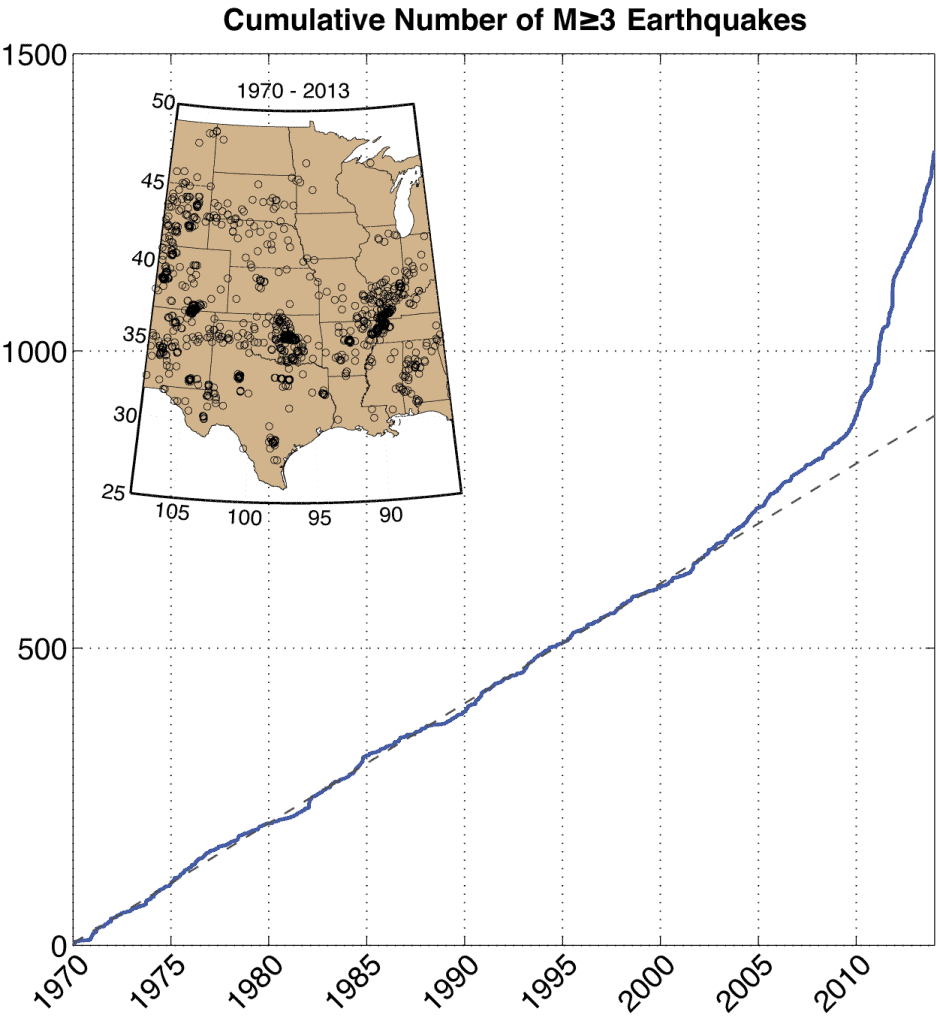In a new study conducted by researchers at the U.S. Geological Survey, researchers showed that the human-induced magnitude 5.0 earthquake near Prague, Oklahoma in November 2011 further caused a larger M5.7 earthquake less than a day later. We’re talking about two human induced earthquakes with magnitudes of 5 and above, in less than a day, in an area that’s not seismically active by itself.
Historically, earthquakes in central US are uncommon, but 2011 witnessed a plethora of earthquakes, in Colorado, Texas, Oklahoma, Ohio and Arkansas. Many of these earthquakes occurred near waste-water injection wells, and some have been shown to be caused by human activities.

So what exactly is “waste-water injection”? Well the name is pretty straightforward what is the purpose of injecting water in the underground? Injection wells are used for several purposes – the main one being, of course, disposing of waste water somewhere safe, injecting it deeper underground, between impermeable layers, where it can’t escape and pollute the freshwater supplies. Waste water-water injection is also closely linked to (you’ve guessed it) natural gas and petroleum production – which is actually the case here.
Hydraulic fracturing, commonly known as “fracking,” does not appear to be linked to the increased rate of magnitude 3 and larger earthquakes. However, much of this wastewater is a byproduct of “normal” oil and gas production and is routinely disposed of by injection into wells specifically designed and approved for this purpose. It seems that wastewater disposal induced the M5.3 Raton Basin, Colorado earthquake in 2011 as well as the M5.6 quake that struck Prague, Oklahoma in 2011, leading to a few injuries and damage to more than a dozen homes.

This research concludes that in Oklahoma, the 5.0 foreshock increased stresses, ultimately triggering the main event, or at the very least amplifying it significantly; the fact that this was happening on a complex fault system (the Wilzetta fault system) also played a key role.
The paper, “Observations of Static Coulomb Stress Triggering of the November 2011 M5.7 Oklahoma Earthquake Sequence,” by D.F. Sumy, E.S. Cochran, K.M. Keranen, M. Wei, G.A. Abers, from the University of Southern California, USGS, Cornell University, Brown University, and the Lamont Doherty Earth Observatory at Columbia University, was published in the “Journal of Geophysical Research” this week.


